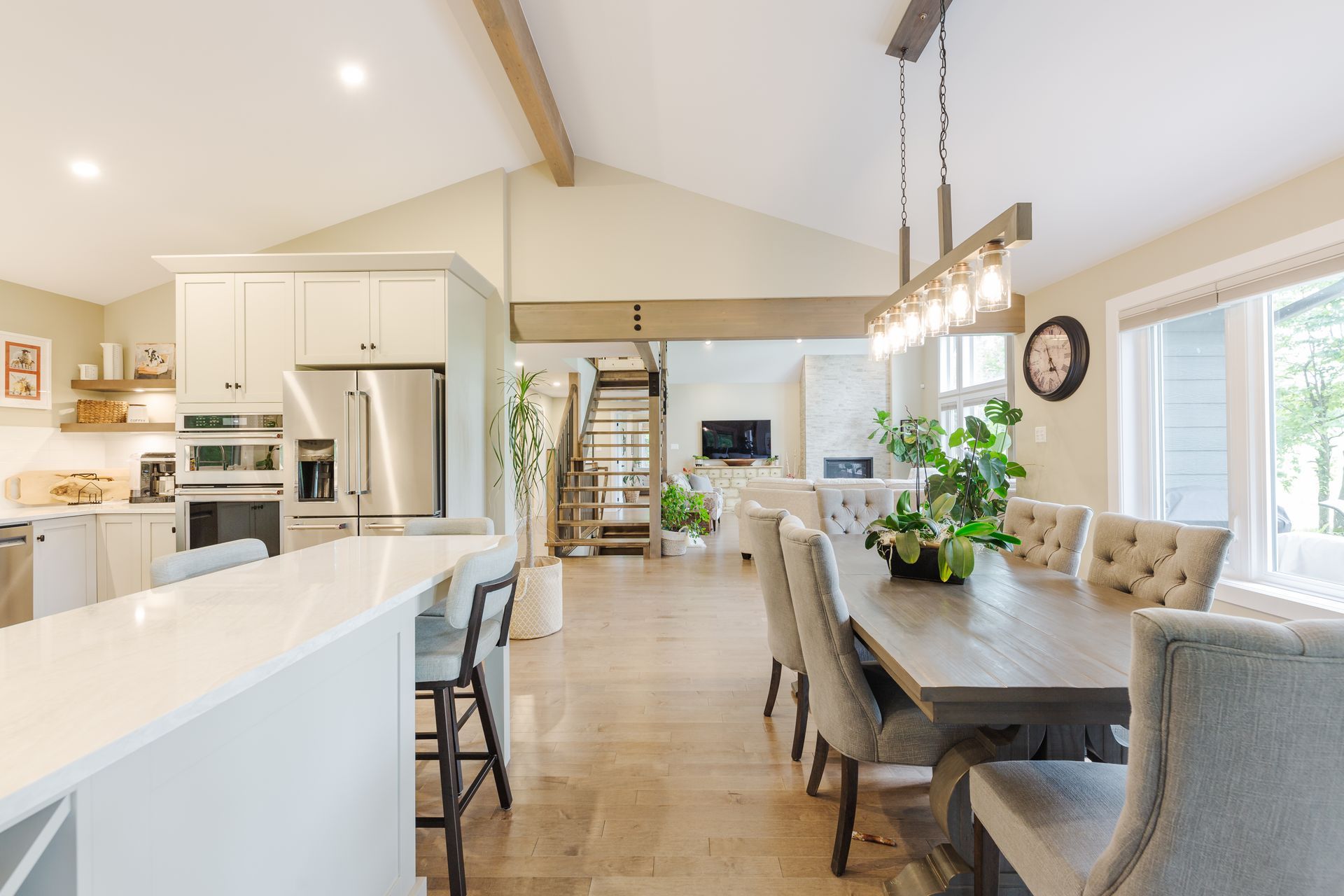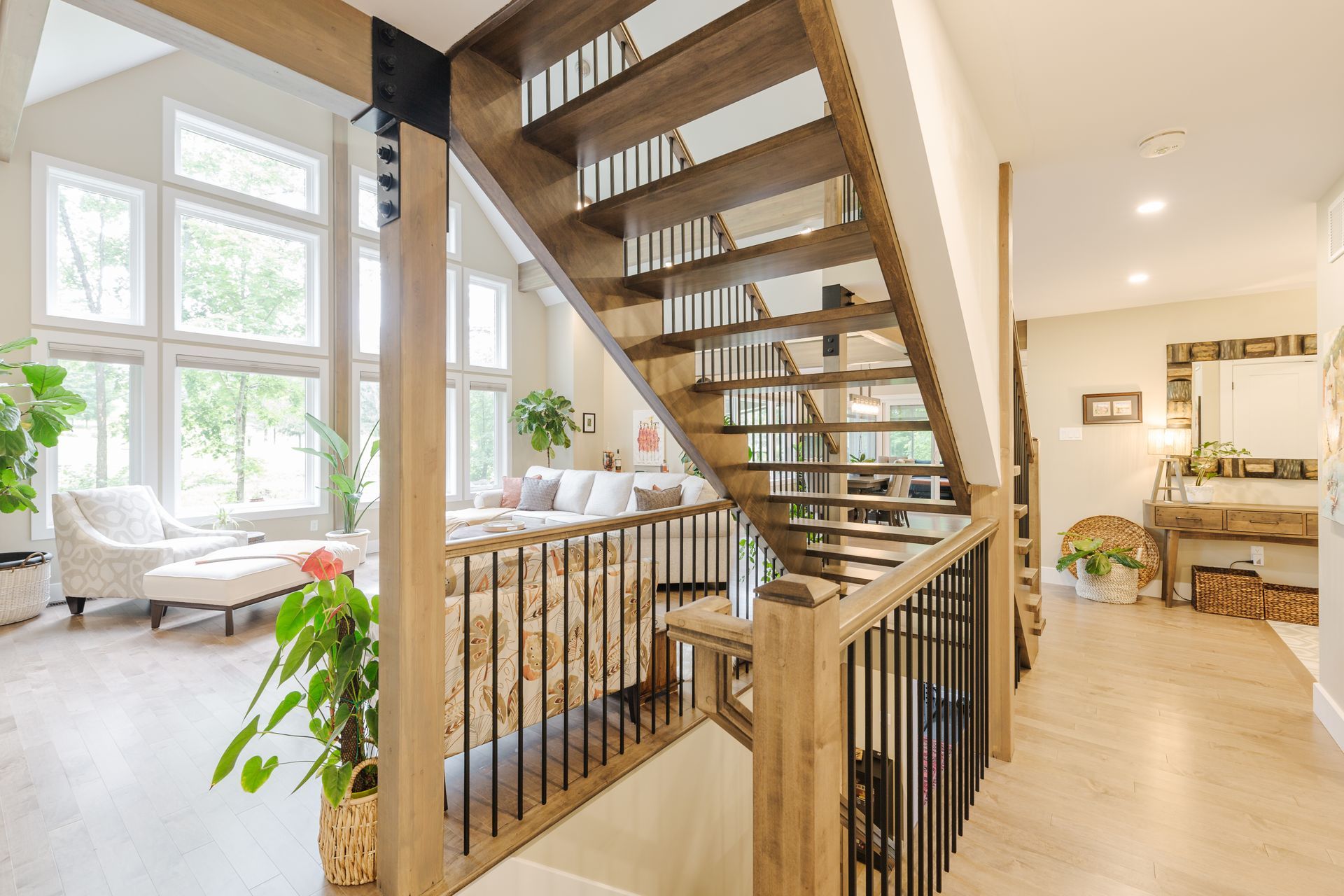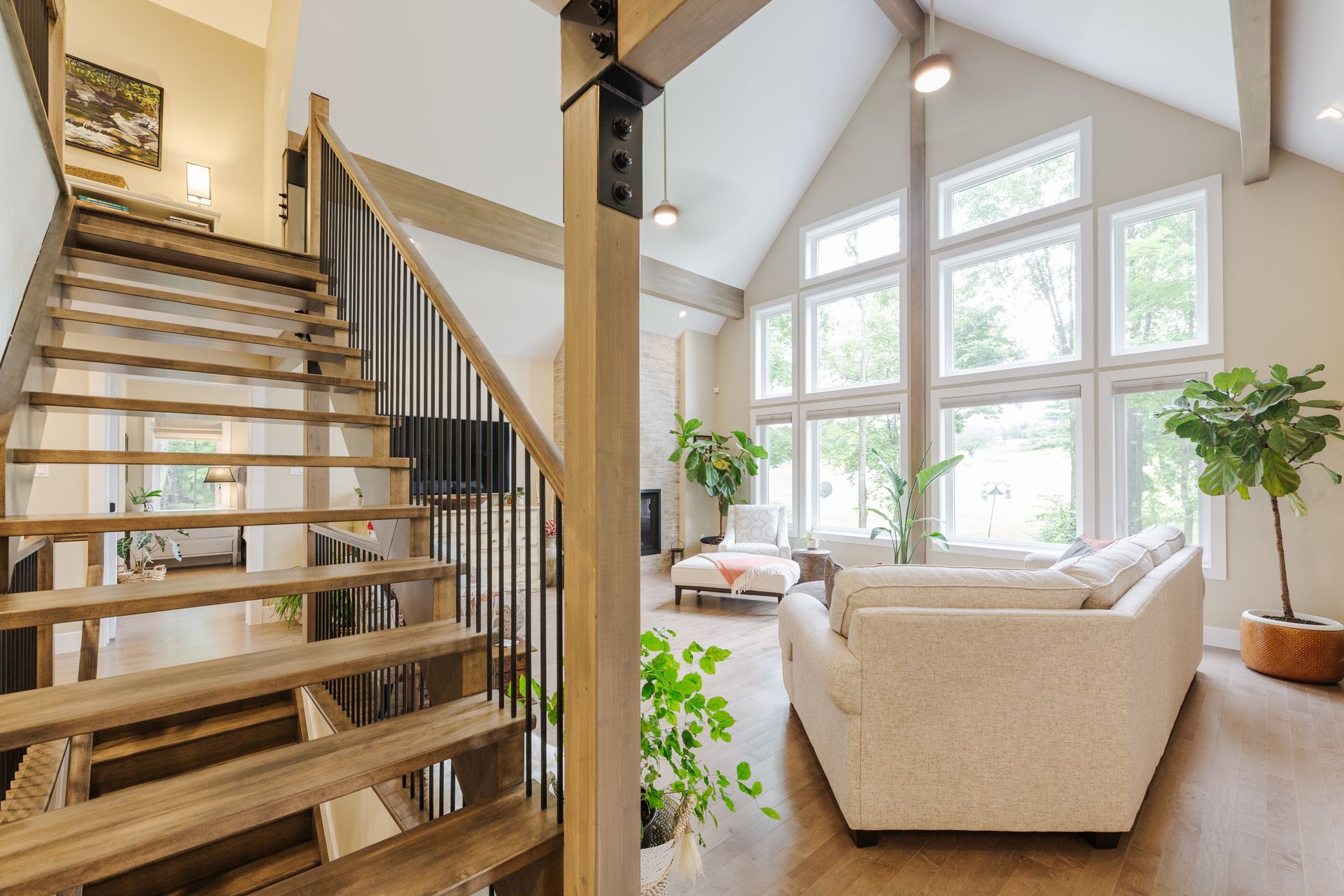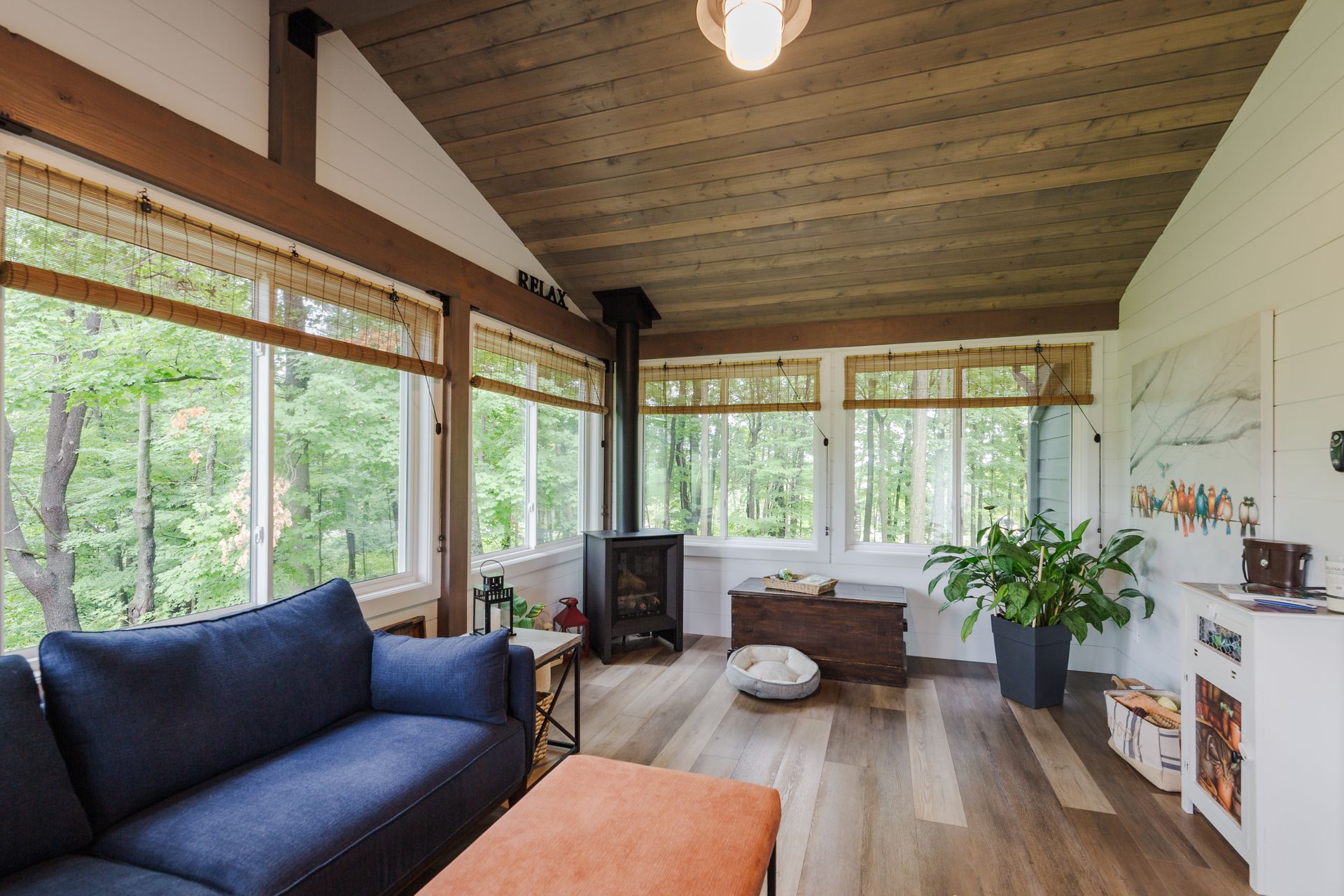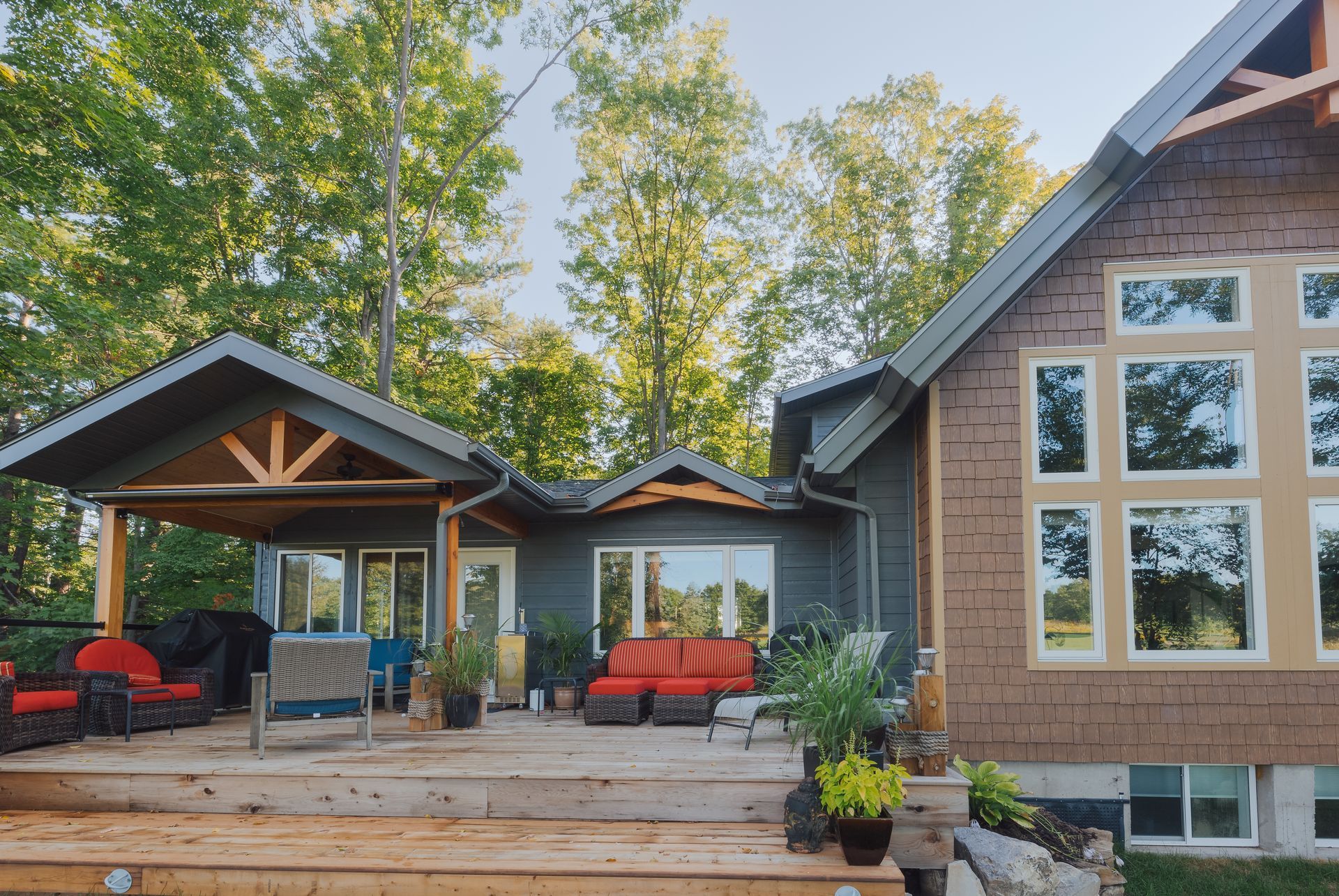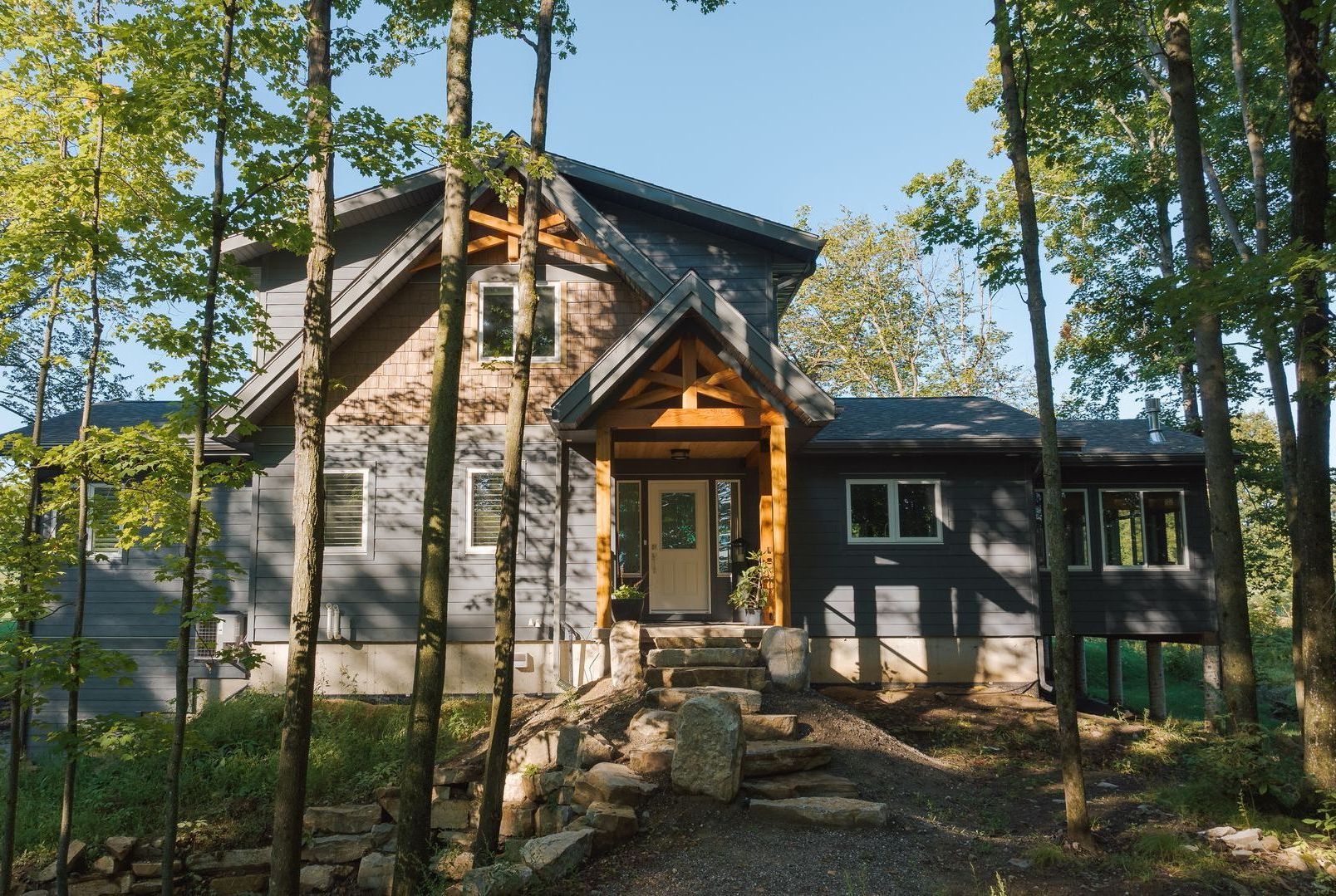Blog
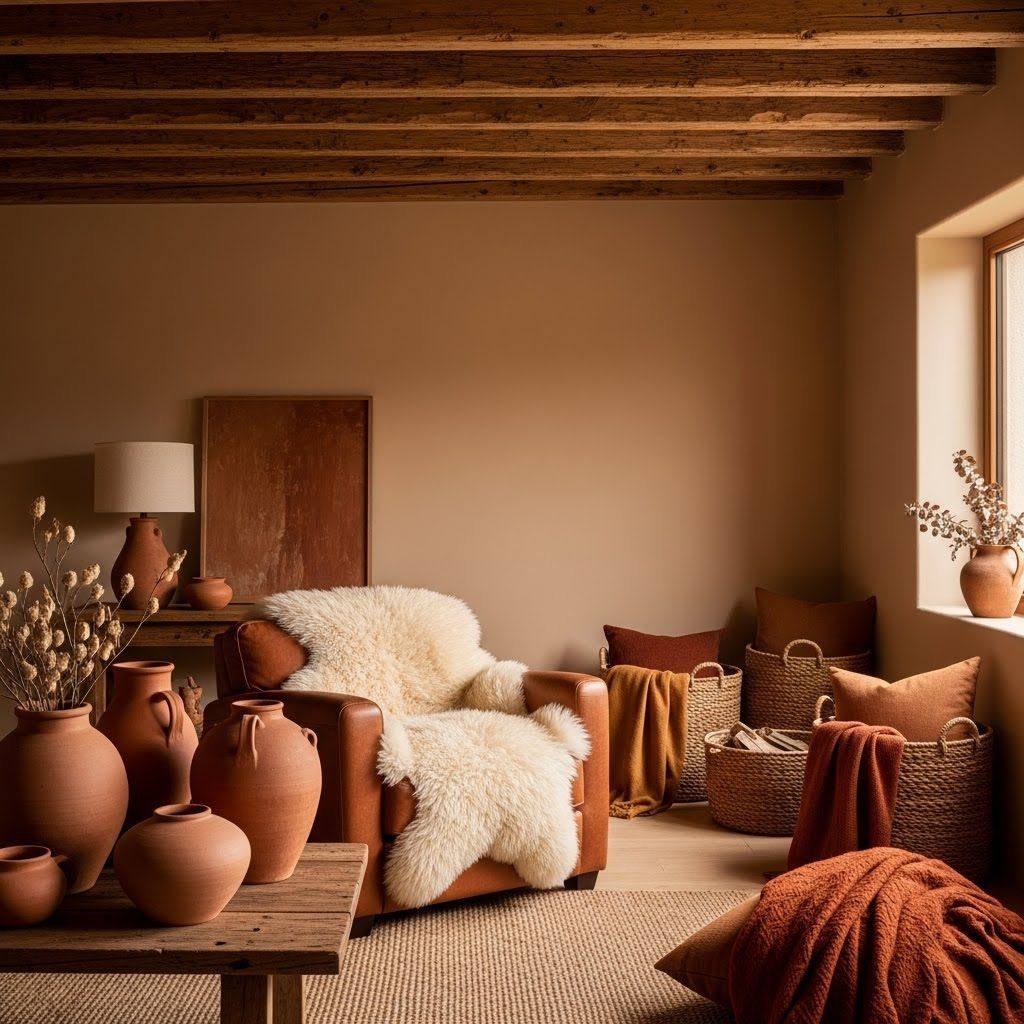
Creating a home that feels both stylish and functional often comes down to thoughtful details and intentional choices. While colour schemes and textures are important, the way you furnish, light, and accessorize a space can make or break its comfort and personality. Here are six essential design guidelines to help elevate your home. 1. Mix and Match Furniture for Interest Gone are the days when everything had to perfectly match. Mixing furniture styles, materials, and finishes can create a room that feels layered, personal, and dynamic. For example, pairing a modern sofa with a vintage side table or combining wooden dining chairs with metal accents adds visual intrigue and makes a space feel curated rather than staged. The key is balance: keep some continuity in colour palette or scale, but don’t be afraid to mix shapes, textures, and eras. This approach allows your personality to shine through and gives each room a sense of depth and story. 2. Never Rely on a Single Light Source Lighting shapes mood, highlights features, and defines functionality in a space. One overhead fixture rarely provides enough flexibility or warmth. Instead, consider layering light: combine ceiling lights, floor lamps, table lamps, and wall sconces. Each source serves a different purpose, ambient, task, or accent, and together they create a more welcoming and versatile environment. Layered lighting also allows you to adapt the room for different times of day and activities, whether it’s a cozy evening with a book or a lively dinner party. 3. Kitchens Need Task Lighting While ambient lighting sets the overall mood, kitchens require dedicated task lighting to make cooking and food prep safe and efficient. Under-cabinet lights, pendant lamps over islands, and strategically placed recessed lighting ensure work surfaces are well illuminated. Task lighting doesn’t have to be purely functional; stylish pendants or sleek under-cabinet LED strips can become design features in their own right, adding both beauty and practicality. 4. Dimmers Are a Must Installing dimmers is one of the simplest ways to add flexibility and ambiance to a space. Being able to adjust lighting intensity allows a room to transition from bright and functional to soft and relaxing in seconds. Dimmers are particularly valuable in living rooms, bedrooms, and dining spaces, giving you complete control over mood without the need for multiple switches or complex installations. 5. Storage Should Be Pretty as Well as Functional Clutter-free spaces are a joy to live in, but storage doesn’t need to be purely utilitarian. Attractive shelving, stylish baskets, built-in cabinetry with decorative fronts, and open storage with thoughtful organization can turn practicality into design. By integrating storage that complements your décor, you create a home that’s both tidy and visually appealing proving that functionality and beauty can coexist seamlessly. 6. Artwork Doesn’t Need to Match Art is a reflection of personal taste, not a strict interior design rule. While coordinating colour tones or frames can help unify a gallery wall, perfectly matching pieces aren’t necessary. Curating a mix of styles, sizes, and mediums often produces a more compelling and authentic look. A large abstract painting can coexist with family photos, prints, or vintage finds, creating a layered, engaging gallery that tells your story. Bringing It All Together Following these six design guidelines - mixing furniture, layering lighting, prioritizing task lighting in kitchens, installing dimmers, combining beauty with functional storage, and embracing eclectic art creates a home that’s not only visually interesting but practical for everyday life. The beauty of these principles is their flexibility. They can be adapted to any style, space, or budget, allowing your home to evolve over time while remaining functional, inviting, and uniquely yours. Small thoughtful choices make a big difference in turning a house into a truly lived-in, loved home.
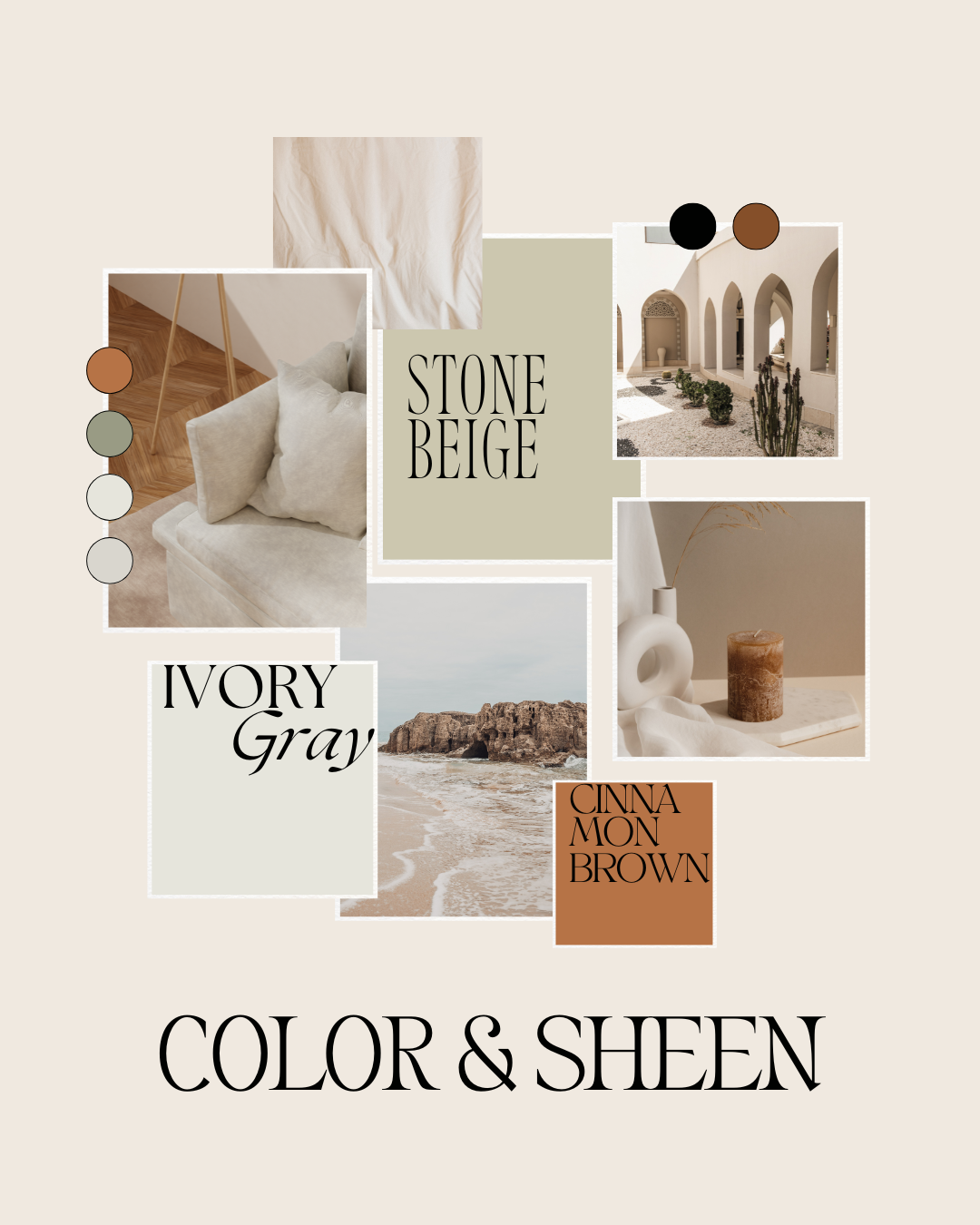
Choosing the Perfect Paint Sheen for Any Room When it comes to painting a room, most people focus on colour — but the finish, or sheen, of your paint can have just as much impact on the overall look and feel. The right sheen not only affects aesthetics but also durability, maintenance, and even the perception of space. Selecting the perfect paint sheen can transform a room from ordinary to polished and help your design last for years to come. Understand the Different Sheens Paint sheen refers to the level of gloss or shine a paint has once it dries. Common sheens include: Matte / Flat : Non-reflective and soft, ideal for hiding imperfections on walls and ceilings. Offers a smooth, sophisticated look but can be harder to clean, making it better for low-traffic areas. Eggshell : Slightly more lustrous than matte, eggshell has a gentle sheen that’s easier to wipe down. Great for living rooms, dining rooms, and bedrooms. Satin / Pearl : A subtle sheen with more durability, perfect for high-traffic areas like hallways, kitchens, and bathrooms. Its gentle shine adds warmth without appearing too glossy. Semi-Gloss : Noticeably shiny and extremely durable, semi-gloss works well for trim, doors, cabinetry, and areas prone to moisture. Gloss / High-Gloss : Highly reflective and bold, often used for furniture, trim, or statement walls. It’s striking but will highlight imperfections if overused on walls. Match Sheen to Function Consider how the room is used. Kitchens, bathrooms, and children’s playrooms benefit from washable finishes like satin or semi-gloss. Bedrooms and living areas are better suited to matte or eggshell, which create a soft, cozy atmosphere while hiding wall imperfections. Factor in Light and Mood Sheen affects how light interacts with your space. Higher sheens reflect more light, making a room feel brighter and more energetic, while matte finishes absorb light for a calm, intimate vibe. Consider both natural and artificial lighting when choosing your finish. Use Sheen Strategically Mixing sheens can add subtle depth. For example, a matte wall paired with semi-gloss trim or doors creates visual contrast without adding colour. This approach emphasizes architectural details and elevates the design. Bottom Line Choosing the right paint sheen is about balancing durability, function, and aesthetics. Understanding how each finish performs in different spaces ensures your walls not only look beautiful but stay beautiful over time. A well-chosen sheen can subtly shape mood, highlight design details, and make your home feel cohesive and polished.

The Ever-Changing Home: Small, Low-Commitment Ways to Add Big Character Not everyone is ready to commit to a bold wallpaper, a custom sofa, or a dramatic architectural change and that’s perfectly okay. Some people love the thrill of reinvention, the freedom to refresh a space on a whim, or the flexibility to adapt a room to their moods and seasons. The good news? You don’t need major renovations or lifelong decisions to bring true character into your home. In fact, some of the most personality-rich interiors are built on small, thoughtful touches that can evolve over time. Whether you’re a serial redecorator, a renter, or simply someone who gets décor FOMO every few months, here are the many small, low-commitment ways to bring character into your space, all without locking yourself into anything you can’t easily undo. Start With the Power of Textiles Textiles are the ultimate non-committal design tool. Throw pillows, blankets, bedding, and drapery can completely change the mood of a room with zero permanence. Want cozy and warm? Pick up something chunky, woolly, or textured. Craving fresh and airy? Light linens or soft cotton blends shift the tone instantly. The best part? These items are easy to rotate seasonally, store between swaps, and layer for variety. Even a neutral sofa feels brand new when you dress it differently. Use Art as Your Personality Playground A rt doesn’t need to be expensive or permanent. A gallery wall with removable hooks, leaning frames on shelves, or even art prints clipped to a stylish board allow you to transform the visual story of your home whenever inspiration strikes. Try switching colour palettes, themes, frame materials and sizes and scale. And for the truly commitment-shy, a large leaning canvas (no nail holes required) adds instant presence without the pressure. Bring Character Through Plants — Real or Faux Plants breathe life, texture, colour, and even a sense of calm into a home. Better yet, you can change them out as your confidence (or curiosity) grows. Start with low-maintenance green companions, or opt for high-quality faux plants that look beautiful in any corner and can be moved around whenever you want a visual refresh. Planters are another easy swap. Think glazed ceramics, baskets, metallic finishes, each adds a unique layer of personality. Try Styling Vignettes That Evolve Over Time Think of your surfaces as tiny stages for expression. Coffee tables, consoles, and open shelves offer endless opportunities to play with small clusters of objects. Consider mixing candles, books, sculptures, bowls and trays, seasonal décor and vintage trinkets. These curated mini-moments are easy to restyle, swap, and tweak. Sometimes just moving objects from one surface to another creates a surprising sense of newness. Make Lighting Your Secret Weapon Lighting dramatically influences atmosphere and unlike structural changes, lamps are wonderfully commitment-free. Swap out lampshades, change bulbs (warm, cool, daylight, soft amber), lamp bases or even the placement of lighting. Try layering different types of light: a floor lamp for ambience, a task lamp for function, and a statement table lamp for personality. Each piece creates mood without permanence. Choose Statement Pieces You Can Move — Not Install If you love character but hate commitment, think “portable personality.” Consider a beautifully shaped accent chair, a bold area rug, a sculptural side table, a quirky ottoman, a decorative ladder for blankets. These pieces can travel from room to room, evolve with your style, or even follow you to a new home entirely. They add presence without requiring renovation-level dedication. Lean Into Colour… in Small Doses You don’t have to paint the entire room. Start with small colour commitments. Think a bold lampshade choice, colourful pottery, a fun patterned pillow, books with bright spines or a vibrant throw blanket. A little colour goes a long way and because these touches are small, swapping them out later is easy and fun. Embrace the Beauty of Scent Yes, scent is a design layer. Candles, diffusers, or incense complete the sensory experience of a home. They create mood, bring comfort, and subtly define character in a way that changes with the season or your mindset. It’s the easiest, most atmospheric layer of all. In the End, Character Doesn’t Require Commitment. A home filled with character isn’t necessarily filled with permanent features. It’s layered with intention, texture, personality, and feeling, all of which can be achieved through small, flexible, easy-to-change elements. If you’re someone who loves to evolve your space, lean into it. Your home doesn’t need to stay the same forever. It just needs to feel like you, right now.
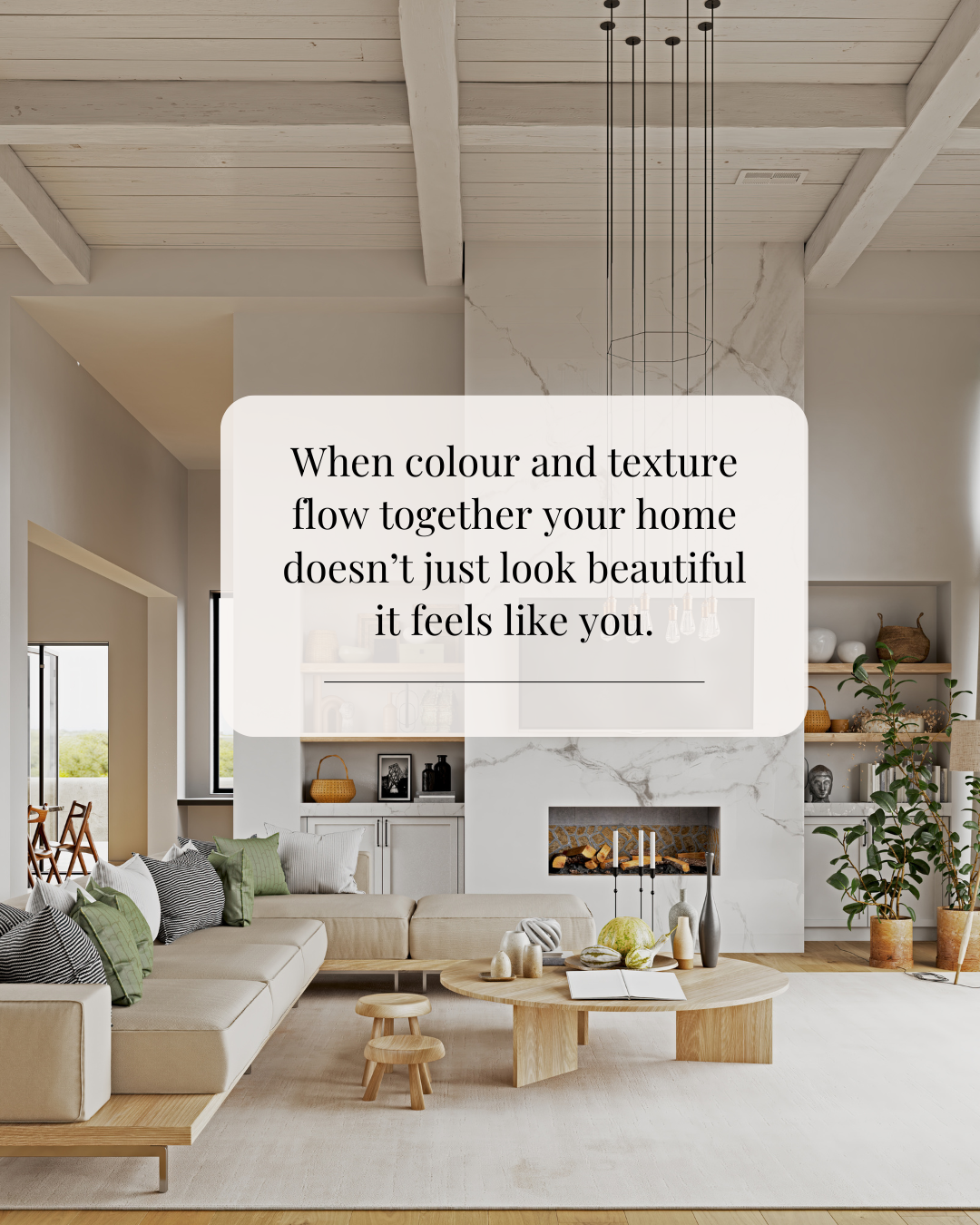
When you walk into a room that feels just right, it’s rarely by accident . That sense of warmth, balance, and visual comfort often comes from a thoughtful mix of colour and texture , the two foundational elements that set the tone and mood of any interior. Understanding how they interact is the key to transforming a house into a home that feels personal, polished, and perfectly balanced. Colour Sets the Emotional Tone Colour is the emotional foundation of a space. It speaks before the furniture, before the art and sometimes even before the architecture. Soft neutrals whisper calm and relaxation, while rich jewel tones command attention and create drama. Cool colours like blues and greens bring serenity, while warmer hues such as terracotta, gold, and ochre add energy and comfort. But colour is more than a mood-setter; it also defines spatial perception. Light colours can make a room feel larger and airier, while darker tones create intimacy and depth. When designing a room, think of colour as your first storytelling layer, it sets the mood, but it needs texture to make the story come alive. Texture Brings Colour to Life Texture is what gives colour dimension. A matte clay wall in a warm tone feels earthy and grounded, while the same colour in a glossy finish feels modern and sleek. The texture of a surface changes how our eyes and our emotions read a colour. A room rich in textures instantly feels layered and inviting. Think woven throws, linen drapery, nubby wool rugs, sleek marble, and soft leather. Even when working within a neutral palette, texture keeps the eye engaged and prevents the space from feeling flat or sterile. In fact, a room with subtle colours but bold textures can often feel more dynamic than one bursting with colour alone. Finding Balance Between the Two The perfect space lies in the balance between colour and texture. If the colour palette is bold, use texture to ground it. Pair deep navy walls with natural wood, rattan, or stone to soften the drama. If the palette is neutral, let texture carry the interest. Layered fabrics, organic shapes, and tactile finishes will make the space sing without overwhelming it. In design, contrast creates balance. Smooth pairs beautifully with rough, shiny with matte, structured with soft. When opposites meet, they highlight each other’s best qualities just like the way a crisp white wall makes a textured jute rug stand out, or how a velvet sofa glows against a painted plaster wall. How to Apply This in Your Own Home Start with a base: choose your primary colour palette, think warm, cool, or neutral. Then, layer in textures that complement and enhance those tones. Here’s how: For neutral palettes: Mix linen, wool, and wood to add warmth and tactile richness. For bold palettes: Add texture through materials like brushed metal, rattan, or distressed finishes to keep the space approachable. For modern minimalism: Use fewer colours, but incorporate subtle variations in texture - matte walls, woven rugs, and smooth ceramics. For cozy, lived-in spaces: Blend natural fibres, textured fabrics, and timeworn materials like aged leather or reclaimed wood. Every texture you add helps balance and refine your spaces colour story. The Emotional Result When colour and texture work in harmony, the space feels authentic and effortless. You sense it the moment you walk in, calm yet engaging, cohesive yet full of depth. That’s because you are experiencing design on two levels: visually through colour and physically through texture. Together, they create not just a room, but a feeling — one that’s deeply human and endlessly inviting. In the end, great design isn’t about perfection — it’s about connection. When you thoughtfully pair colours and textures, you create spaces that not only look beautiful but feel right for the people who live in them. That’s the true art of design.
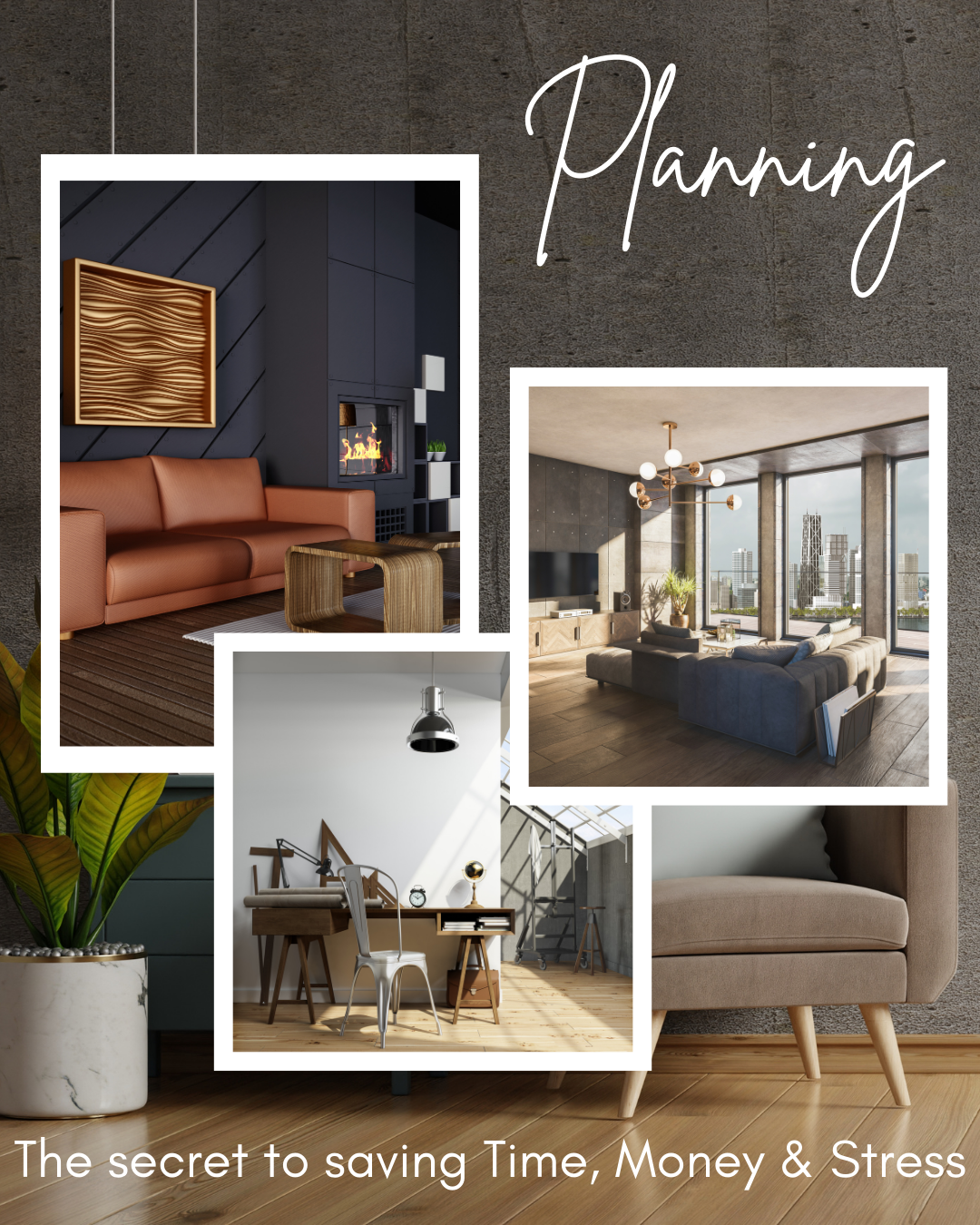
Embarking on a home remodel is exciting, it’s your chance to create a space that better suits your lifestyle, reflects your personality, and adds long-term value to your home. However, without a solid plan, what starts as an exciting project can quickly spiral into delays, overspending, and overwhelming stress. Careful planning is the key to ensuring your remodel is a rewarding experience rather than a frustrating one. By taking the time to prepare before the first hammer swings, you can save time, money, and a great deal of unnecessary worry. Save Time with Clear Direction One of the biggest time drains in a remodel is indecision. When you haven’t nailed down your vision, every decision from paint colors to floor plans, can cause delays. A lack of preparation often means contractors are waiting on you to make choices, which creates downtime that drags the project out longer than necessary. Planning ahead allows you to establish a clear direction. You can decide on your design style, materials, finishes, and layout before construction begins. With these details finalized, your contractors can keep moving forward without interruption. A well-prepared remodel also accounts for lead times on items like cabinetry, tiles, or custom furniture, which are often back-ordered. By ordering in advance, you avoid the dreaded “project on hold” scenario. Ultimately, good planning turns your remodel into a streamlined process. Instead of scrambling to make decisions at the last minute, you’ll already have a roadmap in place, ensuring the project stays on schedule and gets completed faster. Save Money with Smart Choices Remodels can be expensive, but poor planning almost always makes them more costly. When you jump into a project without a clear budget or plan, you risk overspending on impulse purchases, choosing materials that don’t fit the space, or paying extra for last-minute changes. These unexpected costs can quickly add up, pushing your remodel far beyond what you originally intended to spend. By planning ahead, you can create a realistic budget that accounts for labor, materials, permits, and even a contingency fund for surprises. Knowing your financial limits from the start helps you prioritize where to splurge and where to save. For instance, you might decide to invest in high-quality countertops but choose a more budget-friendly backsplash. Planning also gives you time to shop around, compare prices, and wait for sales. You may discover cost-effective alternatives that still deliver the look you want. And when everything is thought through ahead of time, you reduce costly “do-overs,” like realizing after installation that a tile doesn’t suit your space and having to replace it. In short, a clear, organized plan ensures that your money works harder for you, giving you the remodel you want without unnecessary financial strain. Reduce Stress with Confidence Remodeling a home is a big undertaking, and it’s natural to feel overwhelmed at times. But much of the stress comes from uncertainty, wondering whether you’re making the right decisions, worrying about going over budget, or feeling frustrated when delays pop up. A lack of preparation can amplify these worries and make the process feel chaotic. Planning ahead gives you confidence. When you’ve already done the research, chosen your finishes, and mapped out your budget, you know what to expect. You’ll feel more in control because you’re making informed decisions rather than rushed ones. Plus, having a clear plan allows you to communicate effectively with your contractors. Everyone is on the same page, which reduces misunderstandings and helps avoid conflicts. And let’s not forget peace of mind. Knowing you’ve thought through the details means you can actually enjoy the process. Instead of constant problem-solving and second-guessing, you get to focus on the excitement of watching your vision come to life. Final Thoughts A home remodel doesn’t have to be stressful, drawn-out, or financially draining. The secret to success lies in thorough planning. By investing time upfront to define your goals, set a budget, and make decisions in advance, you can save time by avoiding delays, save money by preventing costly mistakes, and reduce stress by gaining confidence and clarity. Think of planning as the foundation of your remodel. Just as a house needs a strong base to stand tall, your project needs a solid plan to run smoothly. With preparation on your side, you’ll transform your home more efficiently and with greater enjoyment making the journey as rewarding as the finished result.
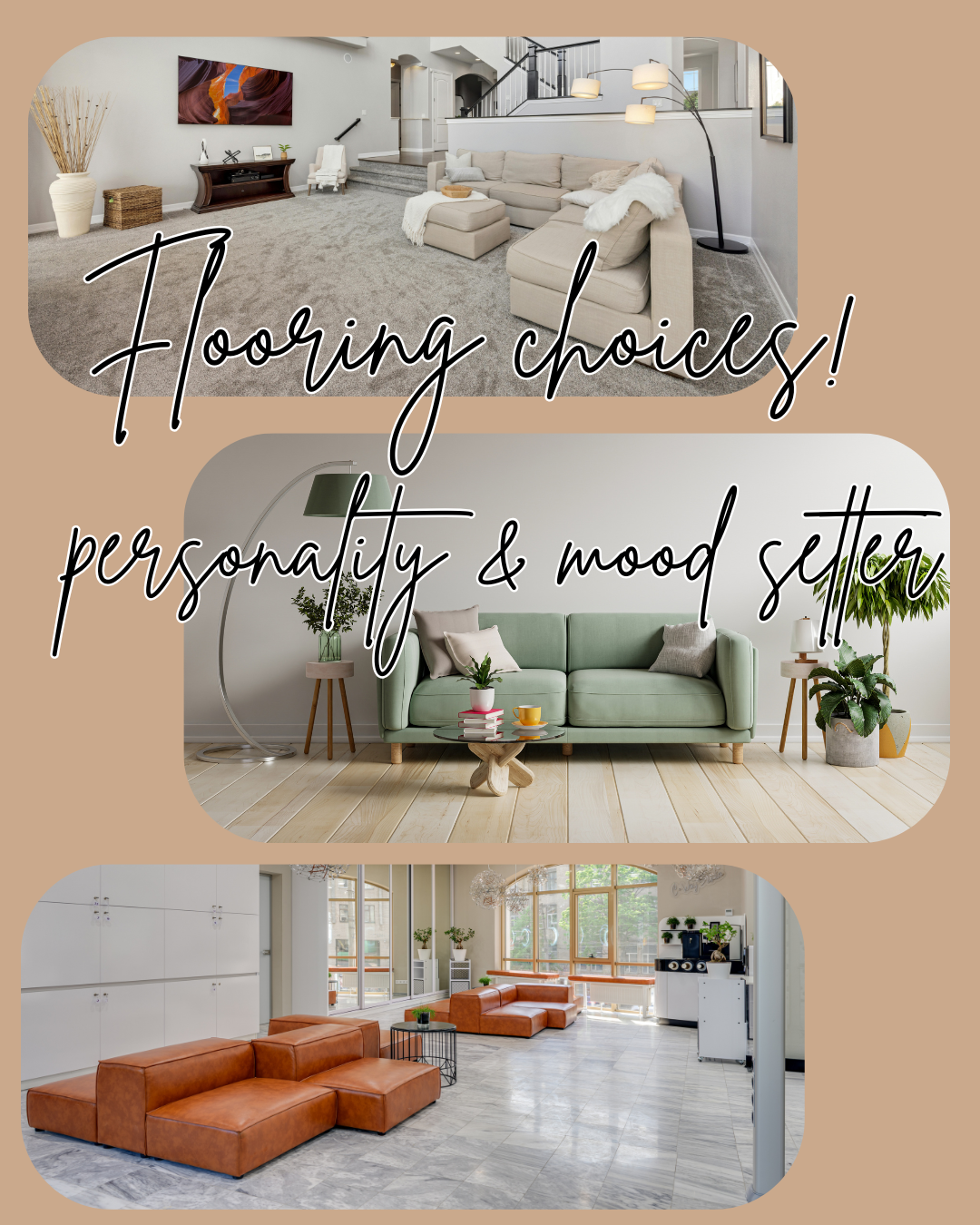
The flooring you choose is more than just a practical surface it’s a foundation for the mood and personality of every room in your home. Carpet, hardwood, and tile each bring their own visual and tactile qualities, setting the tone before a single piece of furniture is placed. Understanding their unique effects can help you design spaces that not only look beautiful but feel exactly the way you want them to. Carpet: Comfort and Coziness Carpet immediately conveys warmth and comfort. The softness underfoot creates a sense of relaxation and ease, making it ideal for bedrooms, family rooms, and other spaces where you want to unwind. Its ability to absorb sound adds to its cozy feel, reducing echoes and making a room feel more intimate. Visually, carpet can range from plush neutrals that evoke calm, to patterned or textured designs that add a layer of personality. In colder climates, it enhances the physical warmth of a space, inviting you to linger. Carpeted rooms often feel more casual, making them perfect for creating welcoming, lived-in atmospheres where comfort is the priority. Hardwood: Timeless Elegance and Warmth Hardwood flooring strikes a balance between natural warmth and refined style. Its organic grain patterns and rich tones bring a grounded, earthy energy to a room while still feeling polished. Hardwood works beautifully in living rooms, dining rooms, and offices, offering a classic look that pairs with both traditional and contemporary interiors. The mood hardwood creates depends on the finish and color. Light woods can make a space feel airy and relaxed, while darker tones evoke sophistication and depth. Because hardwood reflects natural light, it can make a room feel more open and inviting. Over time, it develops a patina that adds character, making it feel like part of your home’s story. Tile: Fresh, Sleek, and Versatile Tile flooring brings a fresh, clean energy to a home. Its smooth surface and cool touch set a crisp, modern tone, especially in kitchens, bathrooms, and entryways. Because tile is available in countless materials, ceramic, porcelain, stone, it can swing from minimalist and modern to richly textured and traditional. Glossy tiles amplify light for a bright, energizing feel, while matte or textured finishes add depth and subtlety. Natural stone tiles, such as slate or travertine, bring an organic sophistication, while patterned tiles inject playfulness and personality. In warm climates, tile offers a cooling effect, giving spaces a breezy, resort-like mood. Choosing for Mood and Flow When designing your home, think about how each room should feel and how those feelings transition from one space to another. Carpet invites comfort and softness, hardwood offers warmth and timelessness, and tile delivers freshness and versatility. You might choose carpet in bedrooms for a cozy retreat, hardwood in living areas for a welcoming sophistication, and tile in high-traffic or moisture-prone zones for durability and brightness. By intentionally pairing flooring material with the emotional tone you want, you create a home that feels harmonious, functional, and uniquely yours.
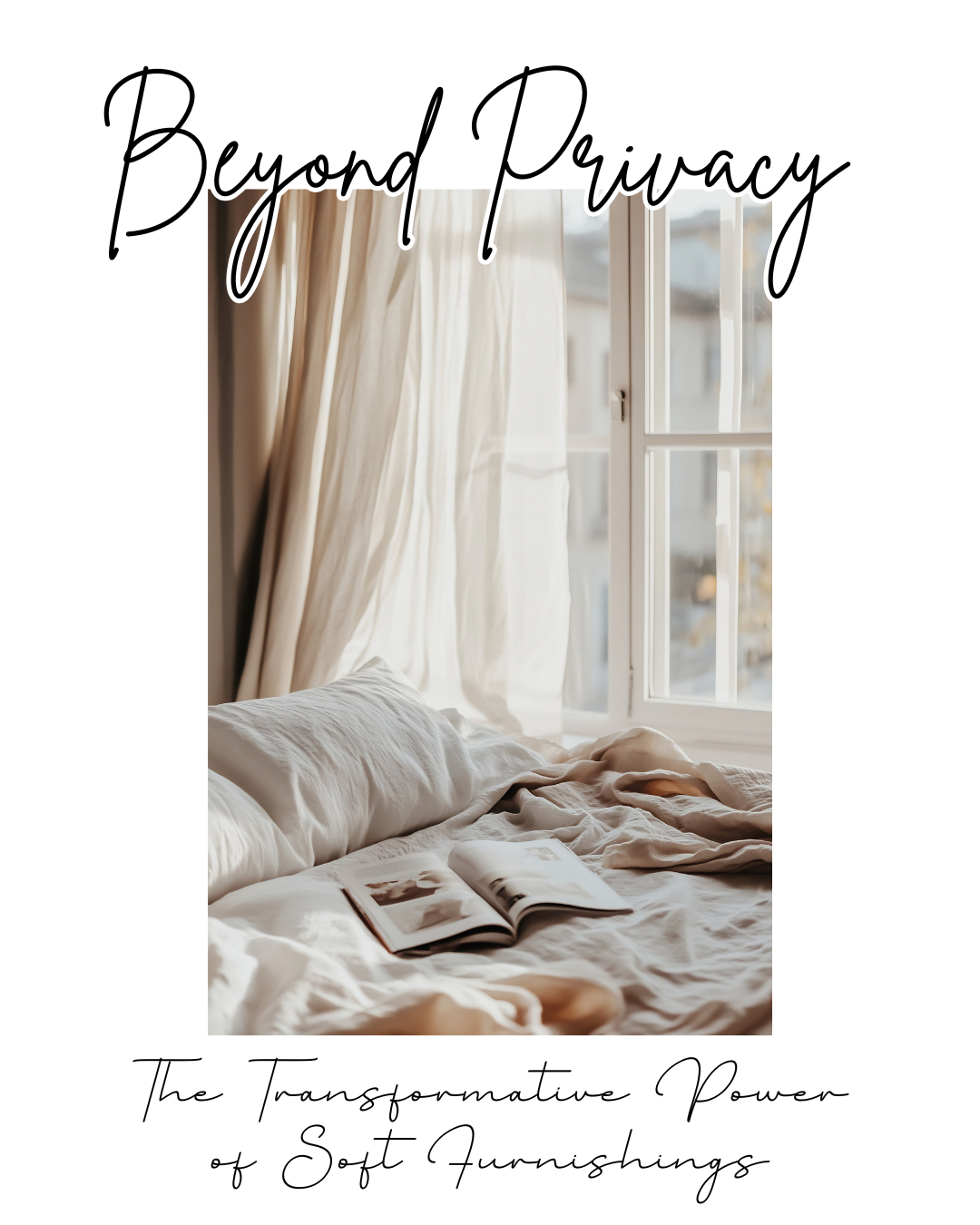
The Transformative Power of Soft Furnishings Soft furnishings, curtains, blinds, drapes, cushions, and other fabric elements are often chosen first for their functional role in providing privacy. Yet their influence on a room extends far beyond simply shielding views. These elements can shape light, influence mood, enhance acoustics, and add layers of style, making them essential tools in thoughtful interior design. Shaping Light and Ambience The way a room is lit impacts its entire atmosphere, and soft furnishings are key to controlling that light. Sheer curtains can filter harsh sunlight into a gentle glow, creating an airy, romantic mood. Heavy drapes, on the other hand, can block light entirely, making a space feel cozy and intimate—perfect for bedrooms or media rooms. Blinds offer precise control, letting you adjust brightness and privacy simultaneously. By manipulating light, soft furnishings also affect how colors and textures appear in a room. Warm-toned curtains can cast a subtle golden glow, while cooler tones can enhance crisp, modern interiors. Adding Warmth and Comfort Textiles naturally soften a space both visually and physically. Curtains and upholstered elements help reduce the starkness of bare walls and windows, adding a sense of warmth and approachability. They also help regulate temperature, keeping rooms warmer in winter and cooler in summer, adding to physical comfort as well as aesthetic appeal. Improving Acoustics One overlooked benefit of soft furnishings is their ability to absorb sound. In rooms with hard surfaces like wood floors, glass windows, or stone walls echoes can make the space feel cold or noisy. Curtains, Roman shades, and even layered blinds help dampen sound, creating a more pleasant and intimate acoustic environment. Layering Style and Personality Soft furnishings are a powerful style tool because they can be changed more easily than furniture or architectural elements. Bold patterned curtains can make a statement, while neutral, textured drapes create a timeless backdrop. The fabric choice, linen for relaxed elegance, velvet for luxurious drama, cotton for casual comfort instantly influences the room’s personality. They also provide an opportunity to tie together other elements in the room. A patterned Roman shade that echoes the tones of the rug or cushions can create a unified, cohesive look without overwhelming the space. While privacy may be their primary purpose, curtains, blinds, and other soft furnishings offer far more, they shape light, influence mood, enhance acoustics, and add style. Choosing them thoughtfully transforms a room from simply functional to beautifully livable.
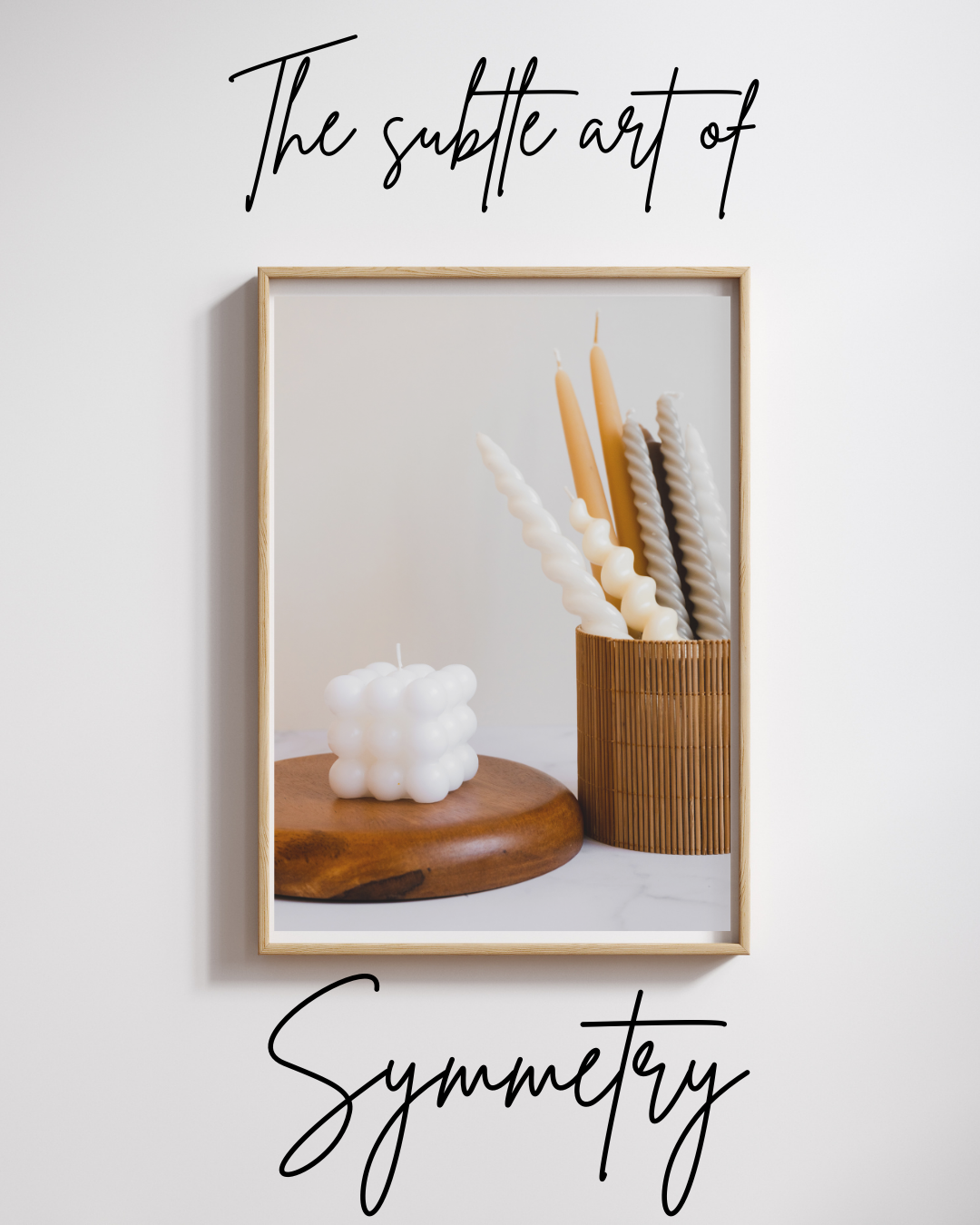
Symmetry is one of the oldest principles of design, rooted in nature, architecture, and art. In interior design, it’s the deliberate arrangement of elements so that each side of a central axis mirrors the other. While the concept might sound rigid, symmetry in furniture placement is not about creating a perfectly matched showroom. Done well, it offers a quiet, grounding beauty that makes a room feel balanced, intentional, and inviting. Why Symmetry Matters Humans are wired to recognize patterns, and symmetry offers a sense of order and calm. When furniture is placed in a balanced way, it creates a visual rhythm that’s pleasing to the eye. In busy, multi-use spaces like living rooms or open-plan layouts, symmetry can anchor the room and help it feel cohesive, even with varied colors, textures, and decor. Symmetry also encourages focus. By drawing the eye toward a central point such as a fireplace, artwork, or large window it naturally organizes the viewer’s gaze. This focal point becomes the anchor of the room, around which all other elements revolve. Classic Symmetry in Furniture Arrangement The most straightforward example of symmetry is the “mirror image” setup: two identical sofas facing each other, or a pair of matching armchairs flanking a coffee table. This creates a sense of formality and structure, perfect for spaces meant for conversation or entertaining. It works particularly well in rooms where architecture already supports symmetry like a centered fireplace or evenly spaced windows. Softening Symmetry Perfect mirroring can sometimes feel overly formal or static. The key to subtle symmetry is balance without rigidity. This can be achieved by: Using pieces of similar visual weight instead of identical ones (e.g., a chair and a floor lamp on one side balanced by a small table and tall plant on the other). Varying textures and finishes while keeping the forms balanced. Incorporating asymmetrical accents like a single statement artwork to break the perfection while maintaining harmony. Symmetry Across Room Types Living Rooms: Symmetry can frame a central coffee table or rug, making the seating area feel intentional. Bedrooms: Matching bedside tables and lamps are classic, but mixing shapes and heights slightly can make it feel warmer. Dining Rooms: Centering a table under a chandelier and aligning chairs evenly is visually satisfying, but varying chair styles subtly can keep it relaxed. Layering with Symmetry Symmetry doesn’t have to stop at furniture placement, it can be echoed in accessories, lighting, and even the way rugs and artwork are positioned. For example, centering a large piece of art over a sofa and placing matching sconces on either side creates visual cohesion. Layering symmetrical arrangements with varied textures and materials adds both structure and richness. The Emotional Effect A room arranged with subtle symmetry feels calm, organized, and welcoming. It provides a reassuring sense of order without stifling creativity. By blending balance with variation, you can create spaces that are both elegant and livable. Symmetry in furniture placement is like a good rhythm in music, it provides the beat that keeps everything flowing. Whether you lean toward perfect mirroring or a softer, looser balance, mastering this art ensures your room feels anchored, harmonious, and effortlessly beautiful.
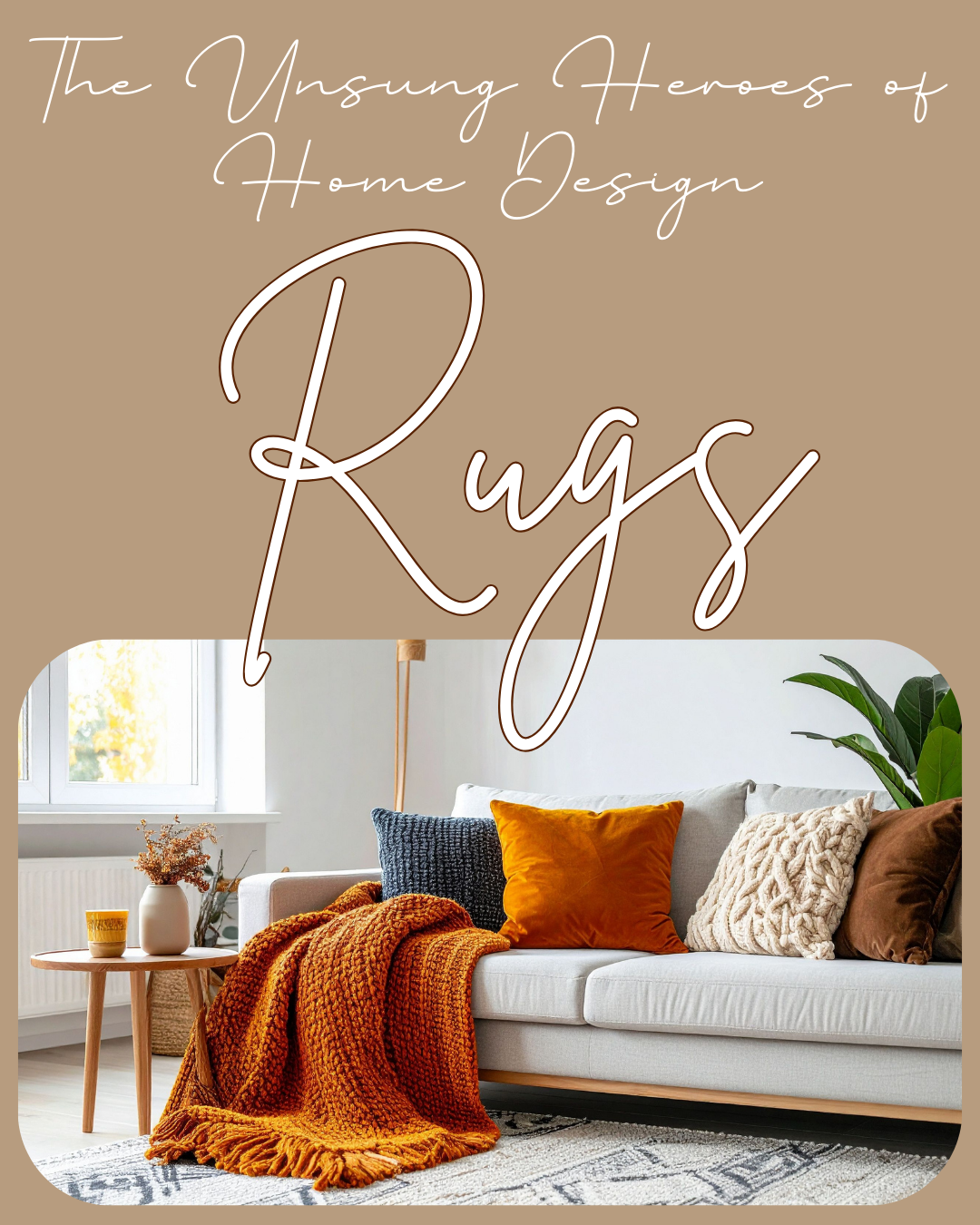
Rugs do far more than cover a floor. They define spaces, add comfort, control acoustics, and layer in color, pattern, and texture. In many ways, they’re the foundation, literally and visually, of a room’s design. When chosen thoughtfully, rugs can completely transform how a space looks and feels. Living Room: Defining and Anchoring In living rooms, rugs help anchor the seating area, creating a sense of cohesion among sofas, chairs, and tables. A rug that’s too small can make furniture feel disconnected, while one that’s large enough to sit under all major pieces instantly unifies the space. Patterned rugs can bring energy to a neutral room, while solid or subtly textured designs keep a bold furniture scheme grounded. Tip : Aim for a rug that extends at least a few inches beyond each seating element to ensure balance. Dining Room: Framing the Table In dining spaces, rugs add warmth and help delineate the eating area, especially in open-plan layouts. Choose a rug that’s large enough for chairs to remain fully on it even when pulled out, so guests don’t trip or feel unbalanced. Flat-weave or low-pile rugs are practical here, as they’re easier to clean and prevent chair legs from catching. Tip : Avoid overly thick or shaggy rugs in dining areas to keep cleaning simple. Bedroom: Comfort Underfoot Nothing feels better than stepping out of bed onto something soft. In bedrooms, rugs add coziness and help absorb sound for a more restful atmosphere. They can be placed under the entire bed or layered on either side for a softer look. This is also a great space to experiment with plush textures or calming patterns. Tip : Choose colors and patterns that support the mood you want, soothing tones for relaxation, or richer hues for a cozy, enveloping feel. Entryway: First Impressions The entryway rug is the welcome mat to your home’s personality. It should be durable enough to handle heavy foot traffic and dirt while still making a style statement. Flat-weave rugs or indoor-outdoor designs are perfect for this high-traffic zone. Tip : Consider darker colors or patterned designs to disguise dirt between cleanings. Kitchen: Comfort and Warmth While not traditionally a “rug room,” kitchens benefit from a bit of softness underfoot especially in front of the sink or stove where you stand for longer periods. Runners or small washable rugs add comfort and style without overwhelming the space. Tip : Look for machine-washable or stain-resistant options for practicality. Layering Rugs for Personality Layering a smaller patterned rug over a larger neutral one can add depth and texture, and it’s a great way to experiment with bolder designs without committing to them on a large scale. Final Thought Rugs are more than decorative accents. Rugs are tools for defining space, adding comfort, and expressing personal style. By choosing the right rug for each room’s needs, you can create a home that feels cohesive, inviting, and uniquely yours.
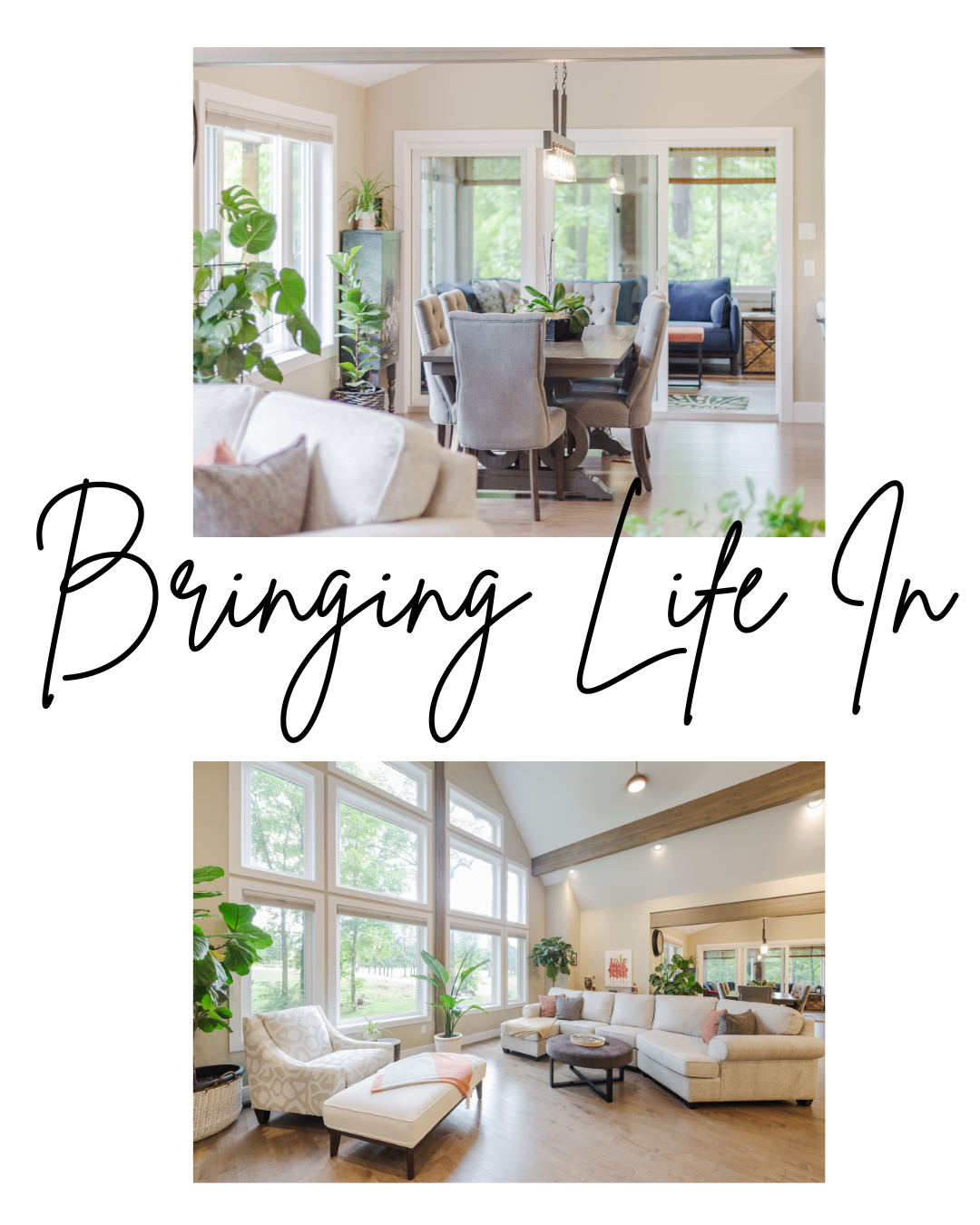
How Plants Can Improve Your Home Without a Green Thumb You don’t need to be a gardening expert to enjoy the beauty and benefits of plants in your home. Even a single leafy addition can breathe life into a space, improving mood, air quality, and overall style with no meticulous care required. Instant Warmth and Personality Plants have a unique ability to make a space feel more alive and inviting. A leafy fern in the corner, a succulent on a windowsill, or a potted palm beside the sofa instantly softens hard lines and adds an organic touch. They bring movement, texture, and color into a room, making it feel less static and more welcoming. Air-Purifying and Mood-Boosting Even low-maintenance plants can contribute to fresher air. While you won’t turn your home into a rainforest oxygen factory, certain plants like snake plants and peace lilies can help reduce toxins and increase humidity. Studies have also shown that simply being around greenery can lower stress, improve focus, and lift your mood, making plants a natural form of wellness décor. Low-Maintenance Options for Beginners If you lack a green thumb, choose hardy plants that thrive on neglect. Snake plants, ZZ plants, pothos, and succulents can survive with minimal watering and adapt to different light levels. Many of these only need attention every couple of weeks which makes them perfect for busy lifestyles or forgetful caretakers. You can also opt for potted herbs like rosemary or mint, which not only look good but can enhance your cooking. Even if they don’t last forever, replacing them seasonally keeps your space fresh and dynamic. Styling with Plants Beyond their health benefits, plants are versatile design elements. A tall fiddle-leaf fig can act as a statement piece, while trailing pothos can soften shelves or bookcases. Grouping plants of varying heights creates visual interest, and choosing pots that complement your décor adds another layer of style. You don’t have to be a plant whisperer to enjoy their magic. By choosing forgiving varieties and placing them thoughtfully, you can reap the benefits, beauty, calm, and a touch of nature without the stress of complicated care.

